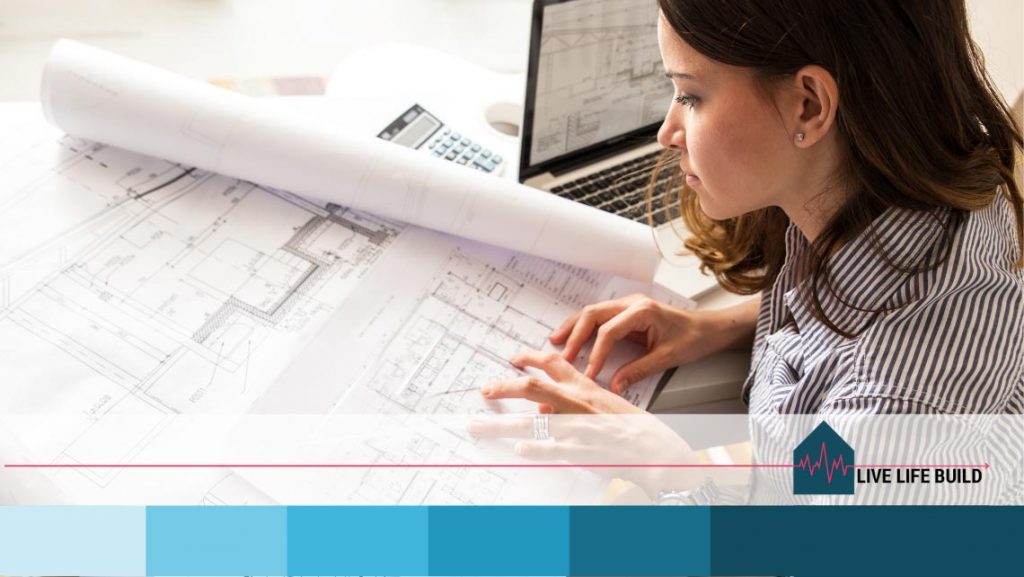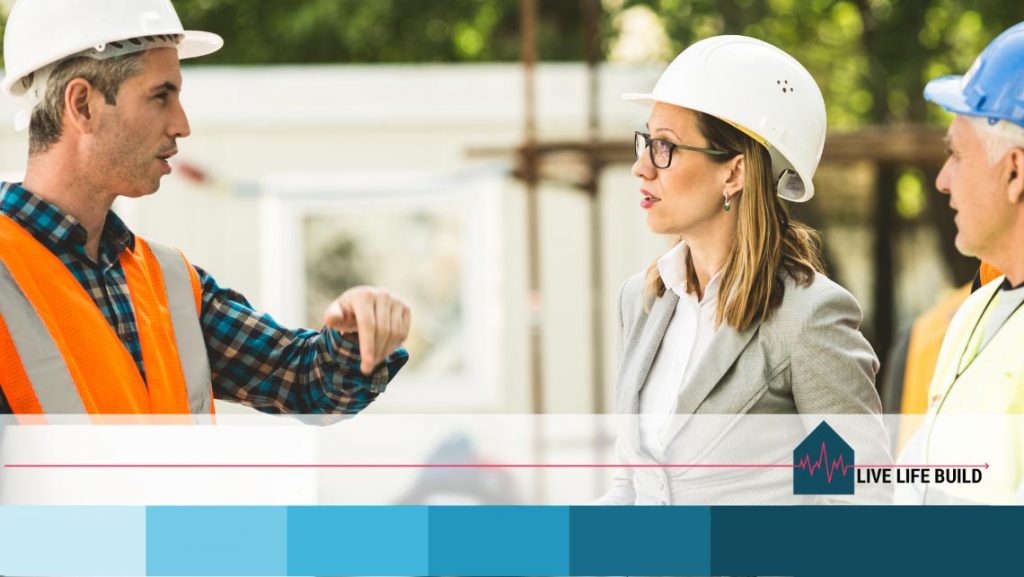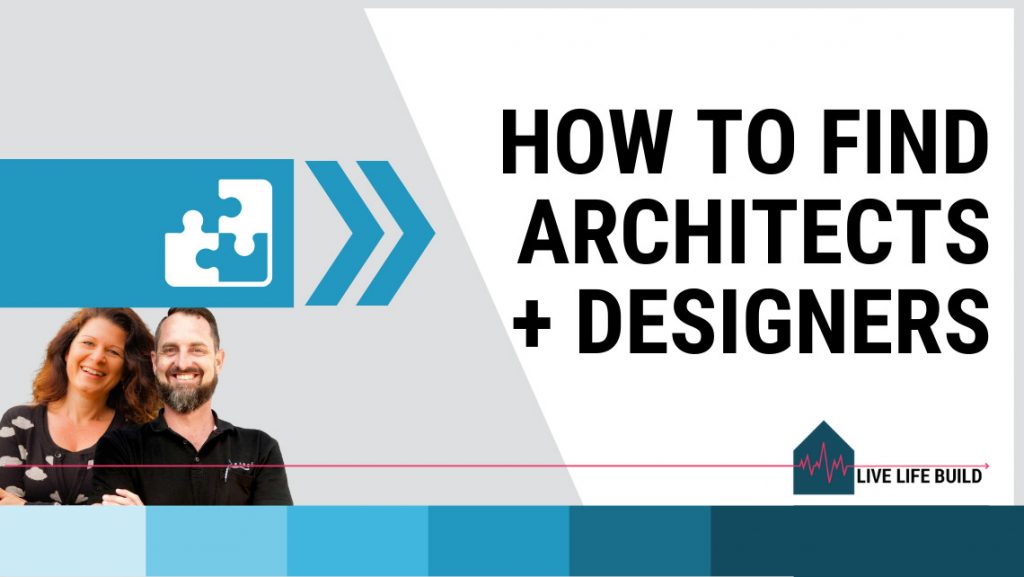How do you find architects and designers you can work with?
And what’s involved in setting up a great partnership that works for you both, and creates successful collaborations?
In this blog, we take you through the 5, 4, 3, 2, 1 of finding architects and designers you can work with, plus the recipe for a great collaboration process you can use.
As a builder, the projects you build become your business card. Homeowners will drive by finished homes, and look at the photos on your website, to determine if they like your work and if you seem like a fit for their future home dreams.
And so, it makes sense to work with designers and architects who can create well-designed homes that look good when they’re finished!
Plus, you will find that you can build the most amazing, beautiful quality home – but if the design doesn’t work for the homeowner, they’ll find the home frustrating to live in, and it won’t matter how well you built it.
Finding great architects and designers to work with can make your life easier as a builder. And help ensure you’re building well-designed, sustainable homes that make your clients’ lives better.
And when you find architects and designers you work well with, you can create a great professional network that supports you in your business:
- You can have other sources for work that don’t rely on you all promoting and marketing yourself all the time.
- You can help clients who approach you find like-minded architects and designers to work with, which enables you to serve your clients better.
- And you can create relationships with colleagues you enjoy working with – which makes everyday business more enjoyable too.
Check out our 5, 4, 3, 2, 1 of our 6P Methodology PARTNERSHIPS: Finding Designers and Architects.
5. BUILDING DESIGNERS VS ARCHITECTS
In Australia, architects design less than 5% of residential homes. So, if you’re looking for architects to work with, you may find you’re competing in a small marketplace to build the right collaborative relationships.
Meanwhile, building designers are often doing a lot more design work for new homes and renovations.
Do you know what the difference is between building designers and architects?
To be an architect, and describe their work as ‘architectural design’ or ‘architectural services’, someone has to be formally registered as an architect. This involves:
- Doing a recognised university degree
- Completing workplace experience with specific hours in the different aspects of project execution
- Passing a written exam, and then an interview with a panel to get registered
- Completing a required amount of Continuing Professional Development (CPD) hours each year when reapplying for registration.
A Building Designer isn’t required to do this, and in some cases and locations, doesn’t require any formal training or qualifications. More often than not, though, they may be someone who completed an architectural degree and didn’t get registered, or they’ve done a TAFE course in building design. In some states, they need to be licensed.
Building designers and architects can work differently in how they deliver their projects. Some will not coordinate other consultants. Some will not get involved during construction. Some will insist on doing either or both of these things.
Get clear on the type of designer you want to work with as a builder. Understand the difference between the roles of designers (there’s also Interior Designers designing renovations and new builds!), and the role they’ll play in the project.
Whoever you’re approaching to collaborate with, be sure they operate professionally, create fantastic client relationships, understand how to manage design risk in their projects, and are properly insured in their business.

4. WHAT CAN YOU OFFER?
We see many builders approach architects and designers with the suggestion of “how about you send some work my way, and I’ll send some work your way?”
However, it’s far better to create strong collaborative relationships with designers, and understand the value you can bring to them and their projects.
When we developed the PAC Process (which we teach in the PAC Challenge), we knew it’s key way of dealing with one of the biggest issues in our industry: that is, designers creating designs that are over their clients’ budgets … and builders tendering on projects that clients can’t afford to build as a result.
Many designers and architects do not understand cost and buildability, or how to improve the efficiency of their projects to deliver great design in affordable ways.
And because so many projects hit that hurdle of being over a client’s budget, there are designers and architects who only see a small percentage of their design work built as finished homes.
There’s always been a certain level of animosity between architects / designers and builders. Unfortunately there have been professionals on both sides of the equation who like to tell the other how to do their job. And that’s what you can often come up against when approaching designers and architects: their fear that you, as a builder will simply want to tell them how to design their projects.
However, when designers / architects and builders work collaboratively and effectively together (to their own individual strengths and expertise), it serves the client, gets projects finished, and improves the process and outcome for all involved.
As builders, you’re at the coalface of what’s happening in the industry in material and product prices, supply issues and what makes projects affordable (and not). You may also have perfected methods in your own work to speed up construction, improve the quality of the outcome, or streamline processes.
How can you get involved earlier in their projects, and what can you offer them to help more of their projects get built? Plus manage the client’s risk around budget and buildability in the process?
Think about what you do well as a builder. And think about the pain points an architect or designer is dealing with on a day-to-day basis in their work with clients. Focus on what you can do to improve things for them and their clients (it will be far more successful than simply sending work each other’s way).

3. GOOD FIT FOR YOUR IDEAL BUSINESS MODEL AND PROJECT TYPE
When targeting building designers and architects to approach and speak to, be sure to assess whether the work they do is a good fit for you and your business.
Many builders we speak with want to work with architects because they believe the high end projects they design will be:
- more profitable work to do as a builder, and
- great for their website and portfolio when the finished photos are published.
However, that may not be the case, and doing high-end projects may be more than your business can handle (or beyond what you want to be managing in your business). In fact, we’ve seen some builders go out the back door quickly due to taking on high-end projects they didn’t have the experience to price accurately or deliver efficiently.
‘Good fit’ doesn’t only apply to the aesthetics or award-winning potential of projects. It can also relate to the location, the materials, whether they’re renovations or new builds, and the general business philosophy and values of the designer.
For example, if you’re a builder who takes sustainability seriously, then it’s important you find architects and designers who are similarly focussed.

2. BEING SOCIAL (AND HELPFUL)
Social media is a great place to connect with potential designers and architects you’re keen to work with.
However, it’s also a really noisy place, and some designers (especially those with larger practices) might not be managing their own social accounts.
Many builders make the mistake of following someone for a while, and then their first connection is to get in touch and suggest a coffee catchup with the architect / designer – where they then pitch their building business as a potential collaborator.
When was the last time you enjoyed a cup of coffee with someone who was pitching themselves to you (with you having no idea what they or their business are like).
Instead, what can you do to reach out and commend an architect or designer on their work or project?
What can you do to show you appreciate design and the specific way they’ve created a renovation or new build design?
How can you connect in a way that builds rapport, and shows your willingness to be collaborative and generous?
And also make a connection that enables you to learn more about them, and helps them learn more about you?
This industry can be hard. It can be competitive. We’re all desperately looking for like-minded people we can connect with, network with, support and enjoy spending time with.
And, let’s be frank … we spend a lot of time doing our work. And we work together over really long periods inside a project.
You’ll be better served by being social and being helpful. This will help you connect with the right people you’ll actually enjoy working with – not just the ones who were up for a free coffee.

1. DETERMINE THE RECIPE FOR YOUR COLLABORATION
The traditional model of delivering a new home or renovation project is this: Design-Bid-Build.
That is, a designer or architect works on the design, approvals and construction drawings. It’s then packaged up as a tender, sent out to three (or significantly more) builders, who bid on the project. And then one is chosen to build.
It’s a broken model. It’s supposed to pit builders against each other to achieve ‘competition’, but it basically favours the builder who can prepare the cheapest quote (which is rarely the most accurate one).
And often, as a builder, you’re the one breaking the bad news to the client that their project doesn’t meet their budget, who often will blame you, and then turn around to get the designer to rework the design so it can be built for less.
We were totally fed up with this broken model, which is why we have honed the PAC Process (or Paid As Consultant Process) over many years. And, having trained other builders to use it through our PAC Challenge, it’s exciting to see so many have success with it in their business.
The PAC Process is where you, as a builder, get paid as a consultant during the pre-construction phase. You come on board the design team as a consultant to the client, to advise on buildability and cost. The designer or architect can then create a design with this input being provided along the way.
This prevents time and money being invested in unaffordable project options, and it means efficiencies can be adopted into the design as it progresses. It also means you can do due diligence on the site (and existing home, if renovating) to manage risks and price your work more accurately.
And it means everyone on the project team can get to know each other before the stress of construction, plus you get to understand the design intimately so you can price it accurately as well.
The PAC Process is a fantastic recipe for collaboration – or partnership – between designer / architect, client and builder. This is not a design-construct model. It preserves the independence of the designer and builder from each other, which we see brings the best outcomes for the future home.
You may have another collaboration recipe you wish to propose to designers and architects about how you can work together.
Be aware, however, that financial kick-backs can breach consumer laws in some locations.
Whatever you determine, be sure it’s a collaborative model that demonstrates a mutual respect for each other’s expertise – them as a designer and you as a builder.
As Live Life Build’s Co-Founders, we are an architect and a builder. The professional cooperation and collaboration is brilliant.
It’s not without the occasional professional tension.
Because, whilst we both have loads of residential project experience, we have different educations, different backgrounds, different expertise, different areas of focus and different ways of thinking about things.
What we share is a very strong mutual respect, and a huge passion for improving this industry we both love and enjoy working in.
This difference that exists between builders and designers / architects is hugely powerful and holds a lot of potential for great outcomes in our industry.
Harness it.
Find the right designers or architects who also share your values and goals. Then create collaborative, respectful working relationships, where you can each bring out the best in each other, the best experience for your clients, and ultimately the best in the homes you create together.

So, here’s our 5, 4, 3, 2, 1 to identify your ideal project.
5. Have you asked your team what their goals are?
4. How can you help and facilitate your team’s goals?
3. What are your goals as a team?
2. Holding people accountable.
1. Celebrate the wins and create a good work environment.
Live Life Build’s 6P Methodology unlocks the 6 ways to elevate your building business:
PERSONAL | PROJECTS | PEOPLE | PARTNERSHIPS | PROCESSES | PROFESSIONAL
What will you do to look for like-minded designers and architects you can collaborate with?

